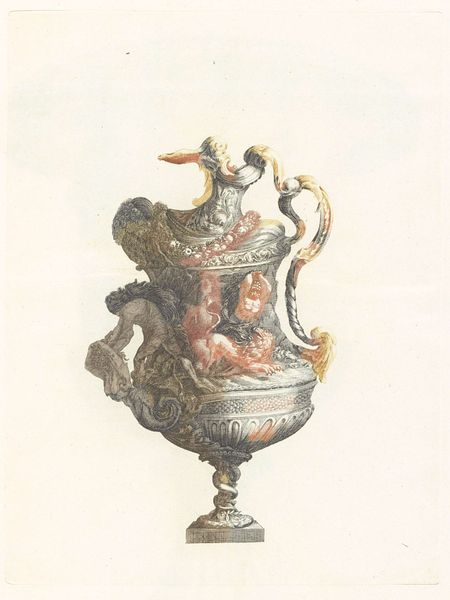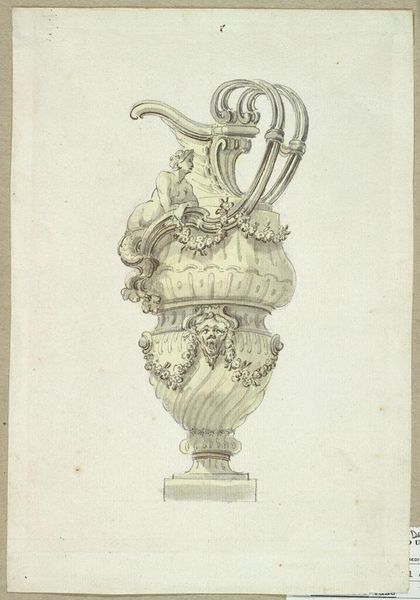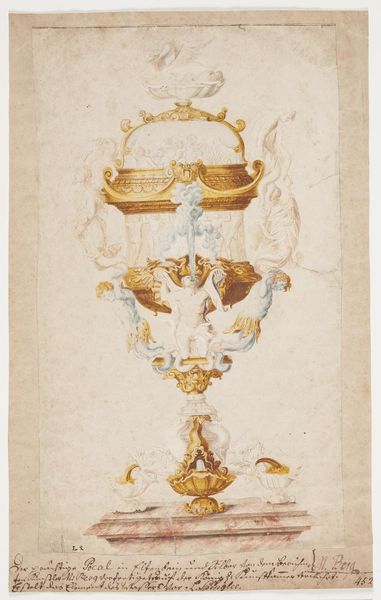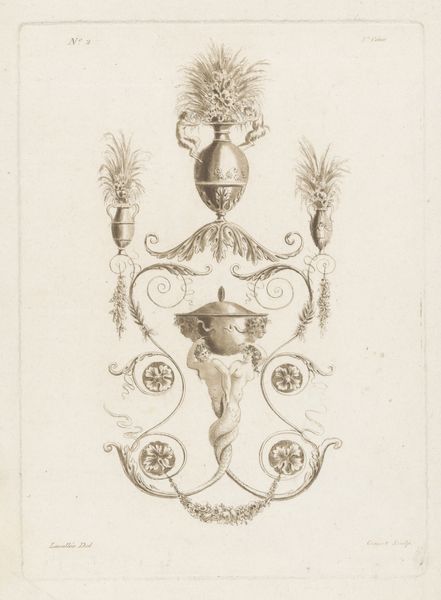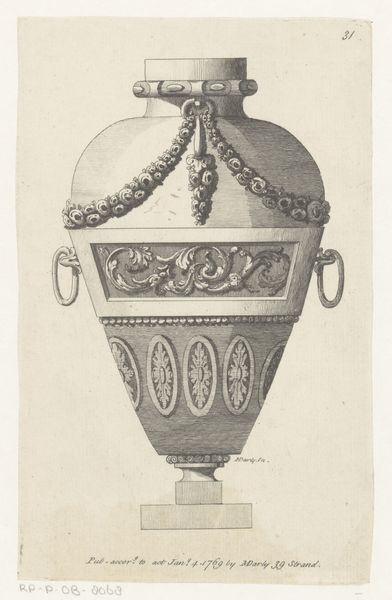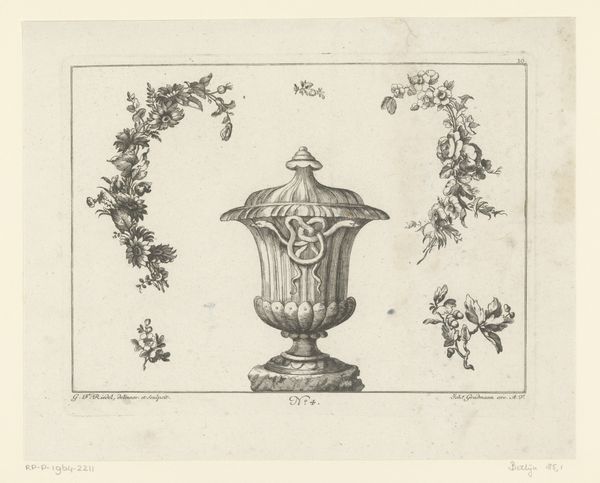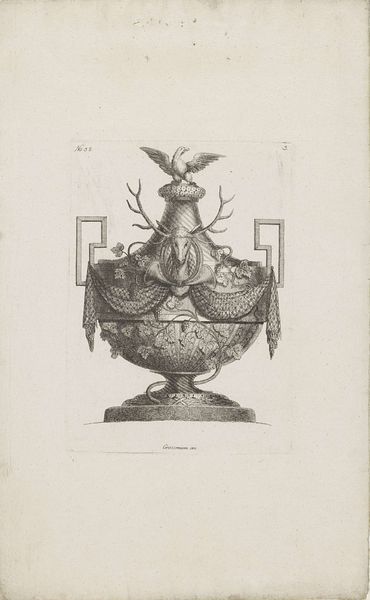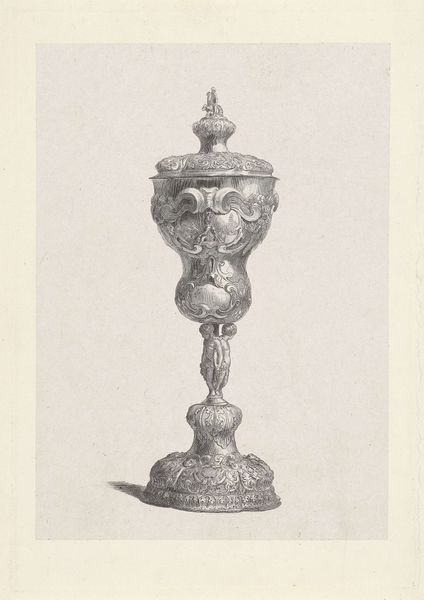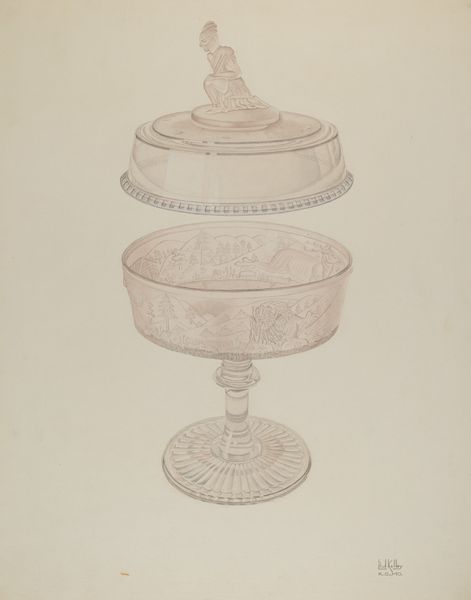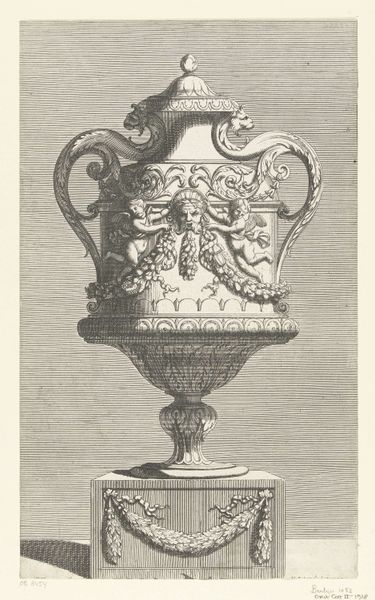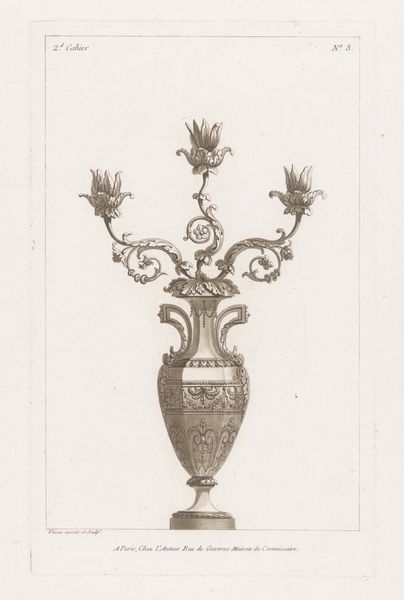
drawing, watercolor
#
drawing
#
baroque
#
figuration
#
watercolor
#
watercolour illustration
#
watercolor
Dimensions: height 385 mm, width 263 mm
Copyright: Rijks Museum: Open Domain
Editor: This is "Schenkkan met naakte man en draak," or "Pitcher with nude man and dragon," an anonymous drawing and watercolor made somewhere between 1688 and 1698. It's really intricate. I wonder, what do you see in this piece that someone might miss at first glance? Curator: It’s a seemingly simple sketch, isn’t it? Yet, looking at this piece through the lens of its historical context, what strikes me is how much it reveals about the role of ornamentation and courtly life during that period. Drawings such as this, depicting elaborate vessels, were often commissioned to showcase the wealth, taste, and access to artisanal skill held by powerful families or individuals. Editor: That makes sense. It does seem to be showing off more than just the pitcher itself. Is the pitcher supposed to be a symbol, maybe? Curator: Potentially. Notice the inclusion of the "naakte man," the nude man, grappling with a dragon. What could that imagery evoke to a viewer in the late 17th century? Perhaps themes of virtue triumphing over vice, or even an allusion to classical myths adapted for the tastes of the time. The decorative arts played a pivotal role in conveying these messages. Who the work was commissioned by, or intended for, adds to the historical richness, unfortunately unknown to us. Editor: That is interesting. It seems like there's a hidden story inside this artwork that's larger than what is shown in the picture. It speaks to the status of someone, wealth, and stories of virtue... things you might not notice just by looking at it! Curator: Precisely. And it’s a reminder that art objects – even drawings of objects – are enmeshed in broader social, political, and cultural narratives. The question then becomes: how does this "pitcher" function as a historical document, beyond its aesthetic value?
Comments
No comments
Be the first to comment and join the conversation on the ultimate creative platform.
